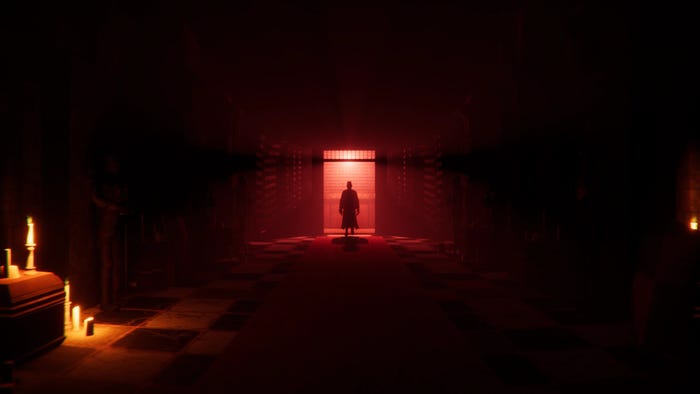Zeptolabs CEO Misha Lyalin sheds some light on how the studio's upcoming F2P Castle Doctrine-esque was made and what other game developers can learn from the experience.

Remember Cut the Rope? The rapid pace of the mobile game market makes it easy to lose track of big games once they shuffle off the top charts, but Zeptolabs' venerable franchise of paid (!) physics-based mobile puzzle games has proven to be an enduring success story since Chillingo published the first game in 2010.
That legacy of success makes it all the more interesting that Moscow-based Zeptolabs is finally making good on long-held ambitions of moving past Cut the Rope to launch a new multiplayer free-to-play mobile game next week: King of Thieves.
Much like Jason Rohrer's The Castle Doctrine, King of Thieves (pictured) challenges players to build their own custom dungeons for protecting loot, then try to break into other players' dungeons (asynchronously) to acquire more treasure and climb the leaderboards.
It's an intriguing departure from a well-known paid game studio that's entering an overcrowded free-to-play market dominated by established players; in this edited interview, Zeptolabs CEO Misha Lyalin sheds some light on how the game was made and what other game developers can learn from the Russian studio's experiences in the international mobile game market.
What was your greatest challenge in developing King of Thieves? It seems like a significant departure from your previous work.
Lyalin: King of Thieves is the first game we have built from the ground up as a free-to-play title. Our biggest challenge was making sure we had a strong monetization model while still maintaining our high standards for player satisfaction and fun gameplay. This can be hard to balance, so we had to do a lot of testing to make sure we were creating a game we could be proud of.
Getting the mix of different genres right was also a challenge for us. Our development philosophy is to innovate - we consider this to be one of the core competencies of ZeptoLab. But that also means our designers bring a lot of big ideas to the table, and we have to filter through to figure out what is realistic and how to incorporate features that aren’t usually seen together.
The mobile game market is becoming increasingly crowded, how do you recommend developers best get their games discovered?
Since introducing the Cut the Rope franchise in 2010 and building our status as one of the most successful mobile gaming companies through subsequent releases, ZeptoLab has been in a unique position to see the mobile game market evolve. There is no doubt that today's market has become extremely competitive. Discovery can be a huge challenge for developers of any size.
Solving the initial discovery problem isn’t that difficult, if you have a fairly modest marketing budget, a good brand or the luck to get featured in the App Store or Google Play. But real success is ultimately dependant on retention and virality. If players stay for the long term, they are more likely to pay.
At the same time, long-term players are more likely to market your game for you and create virality. Increasing retention and creating virality both come down to the same factor: game design that innovates to create experiences worth paying attention to in a crowded market.
As a Russian company with a global audience, you must have a great deal of experience localizing games for other regions. What advice would you give to developers looking to bring their games to other regions, like China or Japan?
The localization process can be very different for each region, so you have to pursue a very customized strategy. For most markets, translating language is the major focus. China, however, is a great example of a unique localization challenge. In many ways, it is the most challenging market to launch in if you aren’t local, because there are many alternative app stores, ways to bill, etc.
Unlike many of the other regions we target, in China we’ve decided to select a publishing partner. Practices there are so different that you really do need a local resource in order to be effective. And being effective in a huge market like China can pay off in major ways.
Speaking of China and Asia and their importance in general, the timing of our February launch was based in part on a desire to get the game out before the Lunar New Year holidays.
About the Author(s)
You May Also Like









